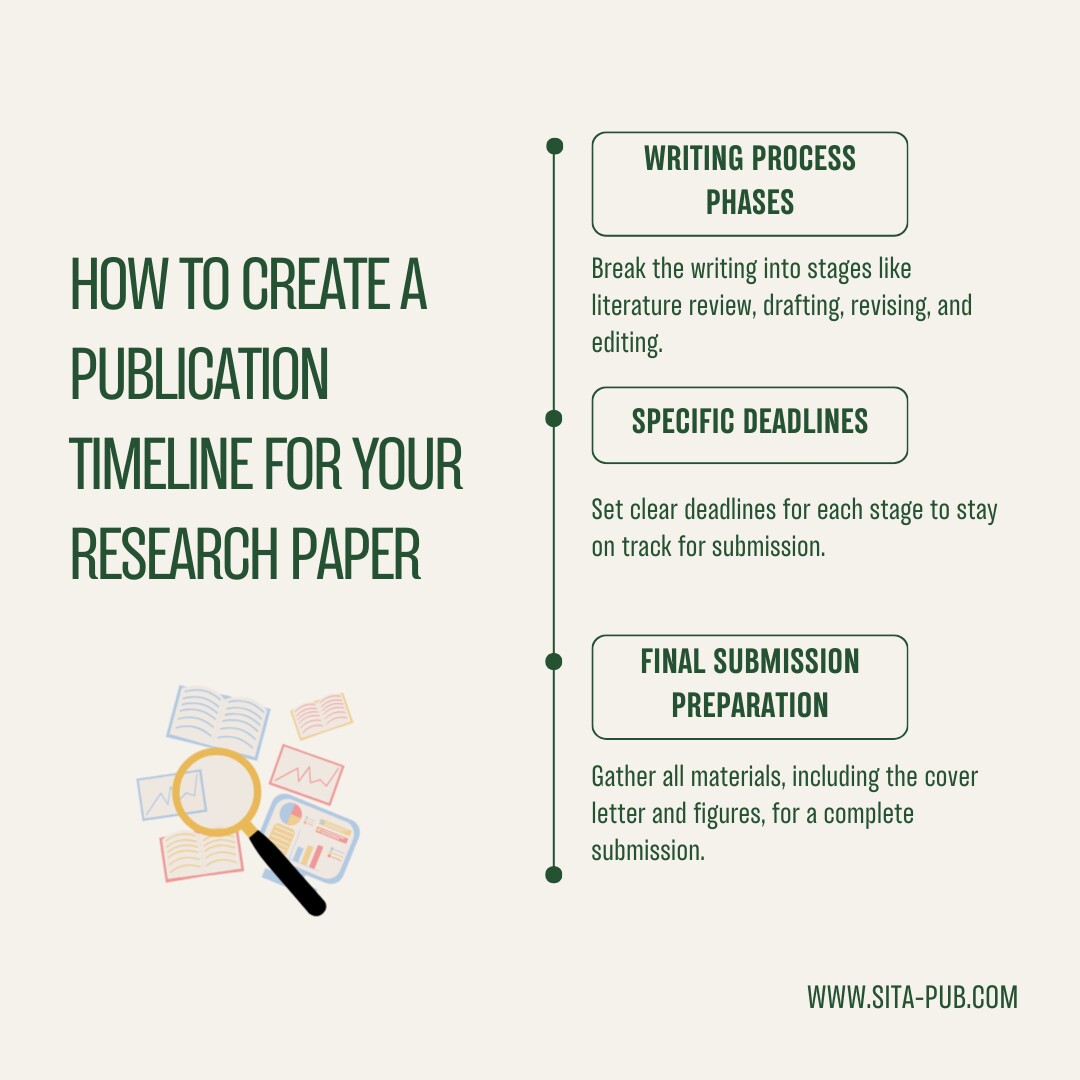How to Create a Publication Timeline for Your Research Paper


Creating a publication plan for your research paper is essential for effectively managing your writing process and achieving your long-term goals in academia. A well-structured timeline not only helps you stay organized but also enhances the speed of publication. Here’s how to create an effective publication timeline.
Start by setting clear goals for your publication. Determine if your research work will be presented as a full paper, a short communication, or a conference presentation. Identifying your target journal is crucial, as it influences your approach and timeline.

Divide the writing process into manageable phases. A typical publication timeline might include:
Literature Review (2-4 weeks): Conduct thorough research to ensure the comprehensiveness of your manuscript.
Drafting the Manuscript (4-8 weeks): Write each section, focusing on the Methods section, Results and Discussion section, and creating a compelling title and abstract.
Revisions (2-4 weeks): Review your manuscript for clarity and coherence, addressing feedback from co-authors or mentors.
Editing (1-2 weeks): Proofread for grammar, punctuation, and overall quality.
Once your manuscript is drafted, familiarize yourself with your chosen journal's specific formatting requirements and submission guidelines. Understanding these early on will help you avoid delays later. Consider the journal's prestige and its alignment with your research findings. Make note of submission deadlines, especially for the best journals in your field.

After understanding the journal's requirements, allocate time to format your manuscript according to their guidelines. This step is crucial for ensuring that your paper meets all necessary criteria before submission.

Assign specific deadlines to each phase of your writing process. For instance, if your target submission date is three months away, allocate time as follows:
Week 1-2: Complete the literature review.
Week 3-6: Draft the manuscript, ensuring that the writing process is smooth.
Week 7: Format the manuscript according to the journal's requirements.
Week 8: Revise and edit the manuscript.
Week 9: Finalize and submit your paper for active submission.
Plan for feedback from co-authors or mentors to improve the quality of your manuscript. Allocate time for them to review your drafts and provide constructive criticism. Make sure to leave room for revisions based on their input in your timeline.

Research and writing can be unpredictable. Build in buffer time for unexpected challenges, such as data collection delays or additional revisions. This flexibility can help you avoid stress as deadlines approach.

Once your manuscript is polished, prepare all necessary submission materials, including:
Cover Letter: Draft a compelling cover letter to accompany your submission.
Figures and Tables: Ensure all visuals meet journal requirements.
Supplementary Materials: Organize any additional documents needed for submission.
After submission, prepare for the peer review process, which typically takes approximately two months. Familiarize yourself with how to respond to reviewer comments, as this will be a crucial step in getting your paper accepted. Understanding the nuances of different journals can also prepare you for varying feedback processes.
Creating a publication timeline is vital for navigating the complexities of research paper submission. By setting clear goals, breaking down tasks, and allowing ample time for revisions, you can streamline the process and increase your chances of publication success in reputable journals.
SITA Academy | Publication Support Services

SITA Academy is a global academic service provider dedicated to helping researchers and students reach their academic goals. We focus on quality and authenticity, empowering individuals and institutions to succeed, especially with publication support.
What services do we offer?